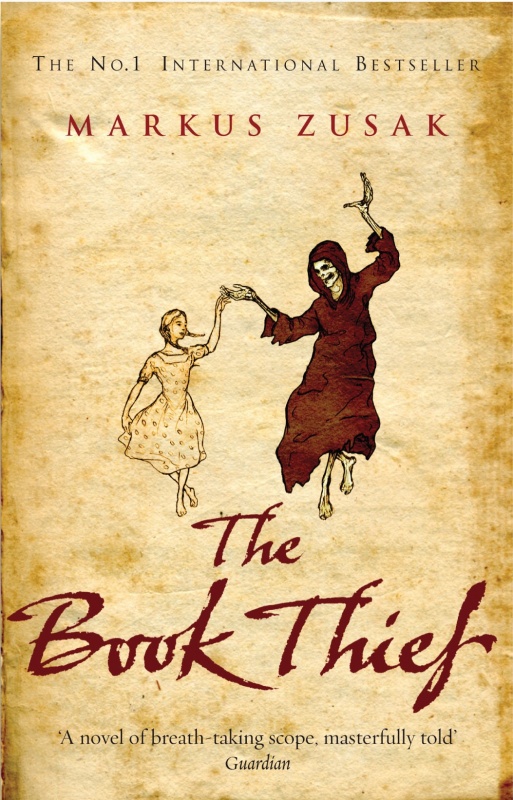 The Book Thief
The Book Thiefby Markus Zusak
reviewed by Alexandra Ehrhart
The Book Thief, a historical fiction novel written by multi-award winning author Markus Zusak, follows Liesel Meminger during her young life in Germany during World War Il. The Book Thief accompanies Liesel as she enters the reality of the world and all of the accompanying pain. Living with foster parents Hans and Rosa Hubermann, bereft of relatives, Liesel has struggled enough. However, living in Germany during Hitler’s reign, there are always more conflicts to come.
Zusak uses symbolism throughout The Book Thief to help readers understand the story more in-depth. He shows many World War II conflicts through the eyes of a child. Zusak compares everyday children's’ activities with the realities of war. In the book, Zusak shows Liesel playing dominoes, a harmless game. However, through discreet symbolism, Zusak turns a pastime into a powerful realization: “He made three separate formations that led to the same tower of dominoes in the middle. Together, they would watch everything that was so carefully planned to collapse, and they would all smile at the beauty of destruction,” (Zusak 408). The dominoes symbolize everything in society falling apart. However, most outside of the Jewish population do not recognize the devastation around them, and support Hitler, oblivious to everything that is going on. All of the symbolism that Zusak uses allows readers to not only read the initial interpretation of his words, but also dive into the underlying meanings.
Zusak also uses much irony in his novel. The story is narrated by Death, who has a dark and brutally realistic sense of the world. Zusak’s sense of irony is evident when it comes to Death, which generally has a negative connotation. Ironically, Death turns out to be a very humorous, wise, and agreeable character who expresses its desire that everyone live a long life without suffering, the opposite of what most would expect of Death. Often, Death expresses how terrible the concentration camps are, and expresses a dislike for Nazi ways. Another instance in the novel where Zusak uses irony with Death is when Death says, “You want to know what I truly look like? I’ll help you out. Find yourself a mirror while I continue,” (307). While humans fear Death itself, Death points out that humans are real reason people die. People kill one another, especially in war. Humans, not Death, created gas chambers, guns, violence, and the war itself. Ironically, Death is just the result of people’s behavior.
I would absolutely recommend this book to anyone. I appreciated the cleverness and deliberate thought put into each sentence. Zusak uses figurative language,imagery, and detail to help the reader understand Jewish hardships during the war. Anyone who is interested in history, or emotional stories will embrace this novel. With a mix of history, friendship, moral concepts, and humor, and through his use of symbolism and irony, Markus Zusak has created an interesting, humorous, and heart wrenching book that I would recommend to any reader.
No comments:
Post a Comment